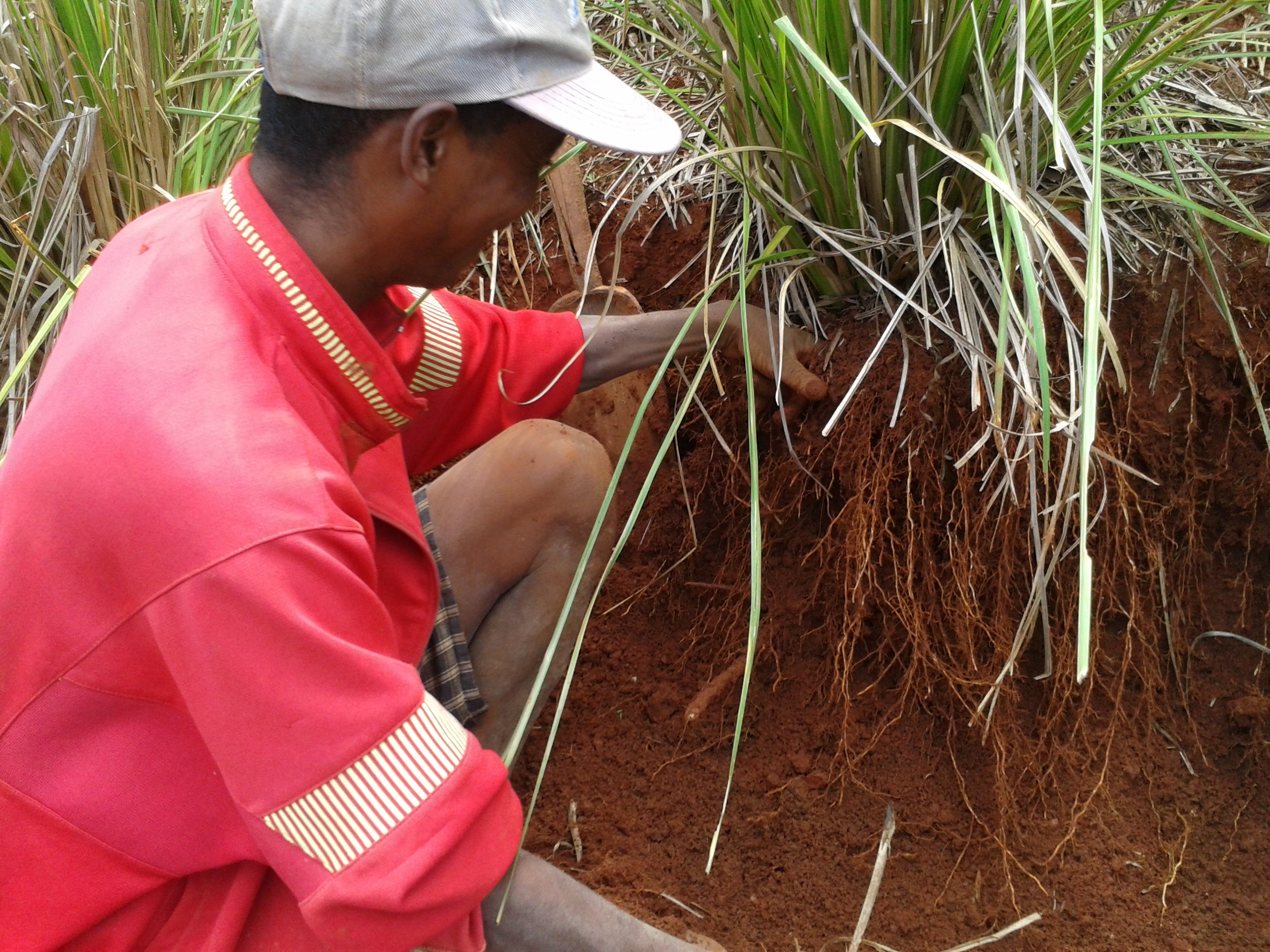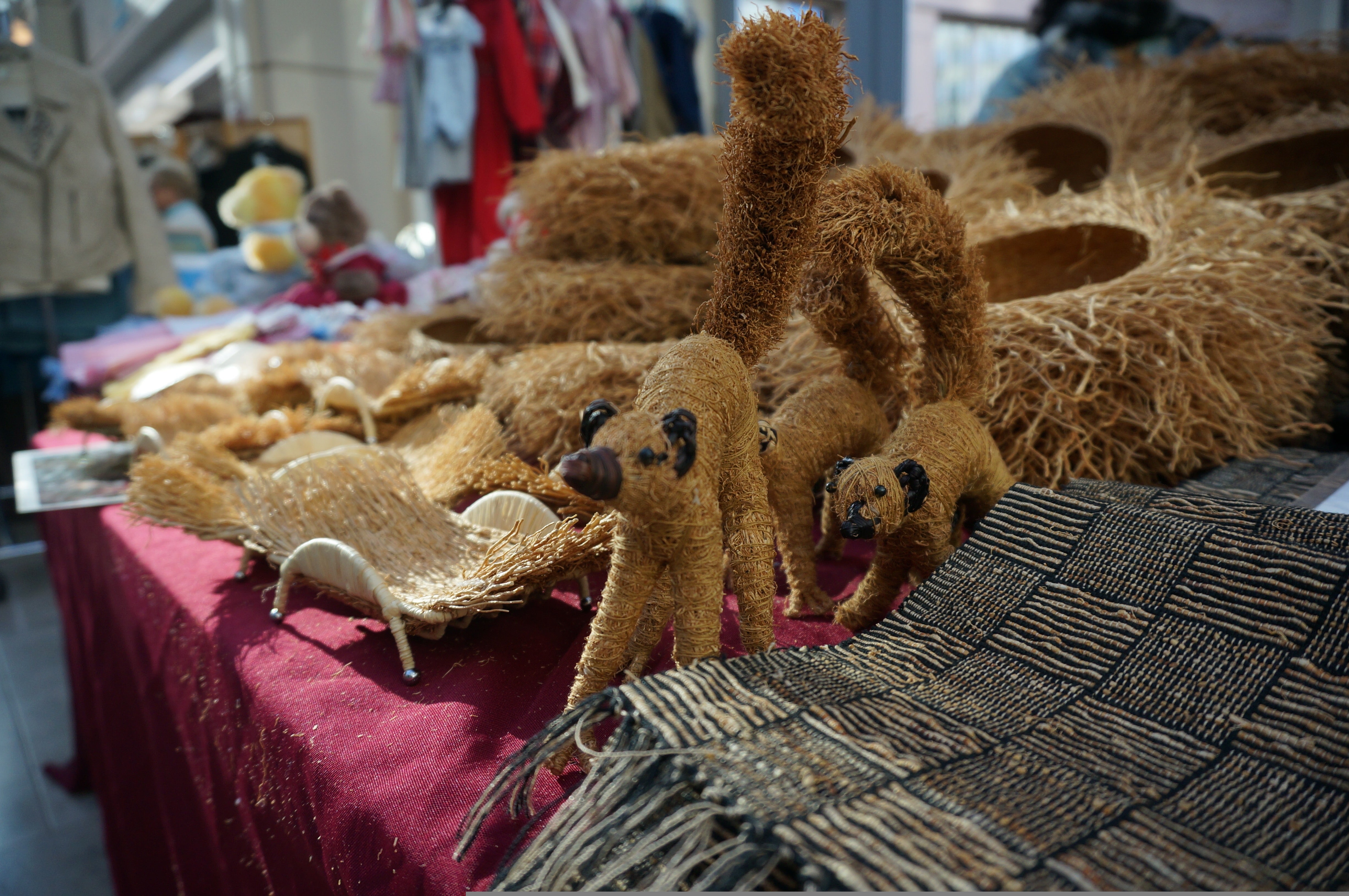A color, a texture, or a smell can be a powerful tool if we want something to become special, and Tahiana Creation knows that very well. The scent of Tahiana Creation’s woven handbags, baskets, and embroidery reaches the nose before the sight reaches the eyes. Their Malagasy crafters’ raw material, the vétiver plant, is a traditional material used for crafts; it also has therapeutic properties such as being anti-inflammatory and an insect repellant. Tahiana Creation uses this valuable natural fiber to create quality, fragrant traditional crafts while benefiting Malagasy artists and ensuring the survival of the vétiver plant.
Marie Alexandrine Rasoanantenaina (Malagasy, Merina) is from Madagascar and is the founder of Tahiana Creation. The story of her business endeavors begins in 1983, when she created her own products from scratch when she was just a girl. She started by sewing children’s Bermuda shorts with the scraps of fabric left over from her grandmother, who was a seamstress and sold the products by going door to door. It was hard work. Some years later, Rasoanantenaina recruited an employee to do embroidery and started prospecting for new customers in town.

Harvesting vetiver. Photo courtesy of Tahiana Creation
Rasoanantenaina started to create naturally dyed products using leaves, bark, fruit stones, and the roots of plants, eventually achieving 40 kinds of natural colors through this method. As the business grew, she strengthened her skills in design, production, management, and marketing, which allowed her to buy materials such as raffia and vetiver for her craftwork.
Today, Tahiana Creation works closely with 45 Malagasy artists in Madagascar. Their vision is to “reduce poverty of vulnerable people by promoting the quality of handmade Malagasy crafts and protecting its fauna and flora, wealth, and biodiversity abroad.” Since 1983, Tahiana Creation has created jobs for Malagasy craftswomen to ensure their income, food, education, and health for their family and communities.
Vetiver is a versatile plant traditionally used to build roofs for Malagasy houses. It has a winding root that can be up to six meters deep and has a unique aroma prized and valued in the perfume industry. Verifier’s scent has been described as fresh cut grass with warm and dry undertones. It is earthy and woody. The process for working with this plant is that after being dug up, the root is washed and then dried naturally. To keep its scent, craftsmen do not tint the roots, but usually weave them with cotton to make handicrafts.

Crafts made with vetiver root.
Tahiana Creation’s current works combine traditional weaving techniques with modern aesthetics to create baskets, rugs, and other household items for daily use. Rasoanantenaina supports other seamstresses by providing platforms by which they can sell their work, and by providing learning opportunities in the form of training and workshops to foster their marketing and business skills.
Rasoanantenaina has gained international recognition. She has participated in the Cultural Survival Bazaar since 2017, as well as the African Women’s Entrepreneurship Program, the renowned International Folk Art Market in Santa Fe, and the Vermont International Festival. Taihana Creation also promotes fair trade practices as members of the World Fair Trade Organization. We invite you to explore her art and get a unique piece for you or your loved ones to support natural art, Indigenous land stewardship, and fairly traded artwork in Madagascar.
The in-person Cultural Survival Bazaars are suspended due to the pandemic.
We look forward to announcing dates for the 2023 Bazaar season soon. Until then, please support and purchase directly from our Bazaar artists by visiting our artist directory at bazaar.cs.org, or visit Tahiana Creation directly: tahianacreation.mg. For inquiries, please email rmalexandrine@gmail.com or send a message via Whatsapp: +1 206 747 7060.
